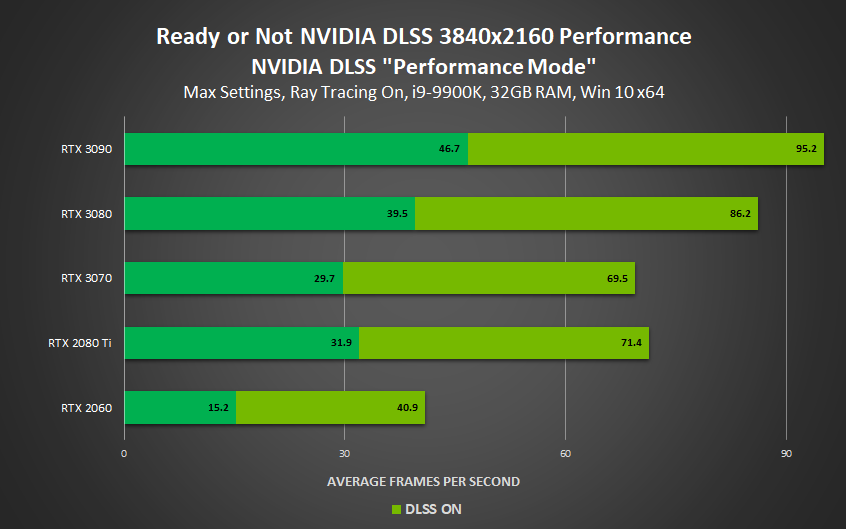Nvidia DLSS Gets Added to Four New Titles Including CoD: Black Ops Cold War
Nvidia's popular Deep Learning Super Sampling (DLSS) technology gets added to four new titles today including Call of Duty: Black Ops Cold War, War Thunder, Enlisted and Ready or Not.
DLSS is designed to improve in-game frame rates at the cost of little or no image quality degradation by rendering the game at a lower resolution and upscaling it to your monitor's resolution. The tech works via Nvidia's AI accelerated tensor cores found in RTX Turing and Ampere GPUs.




Checking out Call of Duty: Black Ops Cold War, Nvidia's graph shows an impressive gain of 83% more FPS across all Turing and Ampere GPUs. Looking at Gaijin Entertainment's games, War Thunder and Enlisted, both show excellent performance gains from DLSS mode as well. In War Thunder, you get around 25% more FPS from DLSS performance mode, and the 25% is linear across both the Turing and Ampere architectures. Enlisted shows it can take more advantage of DLSS though as it stretches its efficiency with DLSS out to around 43% more FPS. But that isn't the best DLSS can offer, in Ready or Not, switching to DLSS performance mode offers a whopping 103% more FPS, the largest gain out of the four titles.
Luckily, all four titles have the new DLSS update right now and you don't need a new Nvidia Game Ready Driver to run it. It's as simple as jumping into the game and toggling DLSS on.
Get Tom's Hardware's best news and in-depth reviews, straight to your inbox.

Aaron Klotz is a contributing writer for Tom’s Hardware, covering news related to computer hardware such as CPUs, and graphics cards.
-
Theskov21 News at 4: Rendering at half the resolution is faster! As stated above, completely useless without quality comparison.Reply -
Vladimir Iliev I'm confused why this trash is still promoted as some miracle - it's makes sense only on low end machines that can't handle your monitor native resolution. Please stop including it on high end GPUs reviews and telling it's advantage.Reply -
vinay2070 Great! Good to know more games are getting DLSS. This will force AMD to implement thier own solution. At the end, the consumers will benefit by using low end card to play at higher frame rate and resolution extending the life of the card.Reply -
watzupken In my opinion, DLSS really makes a difference if RT is a priority. Given the current state of RT implementation, I feel it makes little difference with or without RT enabled. Sure the lighting/ shadow/ reflection looks more realistic, but in the heat of the game, these will be easily overlooked. With a top end card, I would have preferred to run the game with a higher framerate natively at 4K.Reply -
watzupken Reply
Its not some miracle, but rather a way to claw back performance when RT is enabled. If RT is not your cup of tea, then this technology may not make sense to you if you are using a high end graphic card.Vladimir Iliev said:I'm confused why this trash is still promoted as some miracle - it's makes sense only on low end machines that can't handle your monitor native resolution. Please stop including it on high end GPUs reviews and telling it's advantage.